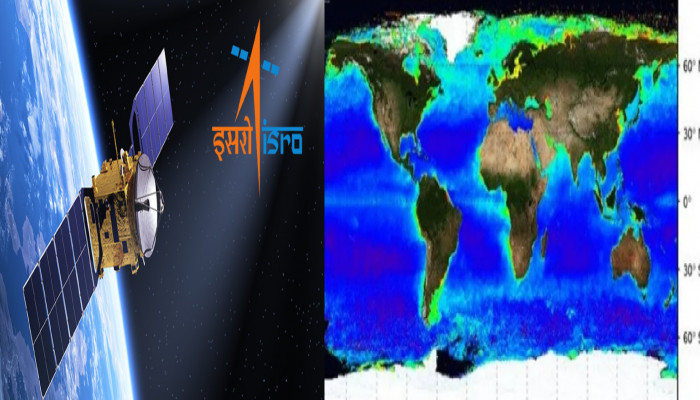ISRO's EOS-06 satellite observes Phytoplankton growth on global scale
- In Reports
- 11:53 AM, Feb 07, 2025
- Myind Staff
ISRO has announced that the Ocean Colour Monitor (OCM) sensor on its EOS-06 satellite has recorded the global distribution of phytoplankton in the ocean.
In a post on X, ISRO said, "OCM sensor in EOS-06 captures Phytoplankton concentration on global scale. Ocean Colour Monitor (OCM) sensor of EOS-06 captures chlorophyll-a (Chl-a) concentration in a global scale at a frequency of 2 days. The below image shows global product generated at 1 km resolution using data for the period Jan-Dec 2024. Ocean colour observations help in gathering valuable information on bio-geo chemical variability of oceans in a global scale.."
The third-generation satellite of India's Oceansat series is called EOS-06, or Oceansat-3. It was launched with improved capabilities to carry on the services offered by Oceansat-2, its predecessor. The satellite is equipped with a number of cutting-edge instruments to aid in environmental monitoring and ocean research. One of its main instruments is the Ocean Colour Monitor (OCM-3), which helps study ocean colours.
Other important tools include the Sea Surface Temperature Monitor (SSTM) for measuring sea temperatures, the Ku-Band Scatterometer (SCAT-3) for monitoring wind patterns, and ARGOS, a system that collects environmental data. As per a previous ISRO statement, "The EOS-06 is envisaged to observe ocean colour data, sea surface temperature and wind vector data for use in oceanography, climatic, and meteorological applications. The satellite also supports value-added products such as potential fishing zones using chlorophyll, SST and wind speed, as well as land-based geophysical parameters. The primary satellite (EOS-06) has been separated in Orbit-1."
The mission focuses on continuously collecting ocean colour and wind data to support practical applications. This information helps scientists study marine ecosystems and track climate change. The satellite also brings improvements by adding more data, such as sea surface temperature and extra optical and infrared bands. These additions help with fluorescence studies and atmospheric corrections. These improvements are likely to make ocean studies and environmental monitoring more accurate. Another important goal of EOS-06 is to create better methods for analysing data and developing useful information. By improving the way data is processed, the mission aims to enhance predictions and studies related to climate patterns, fisheries, and weather changes.
The satellite, which had a separation mass of 1,117 kg, was launched by ISRO's U R Rao Satellite Centre (URSC), India, on board the PSLV-C54 rocket. This objective is essential for studying the world's seas as it helps scientists better understand weather patterns, marine ecosystems and climate change.







Comments